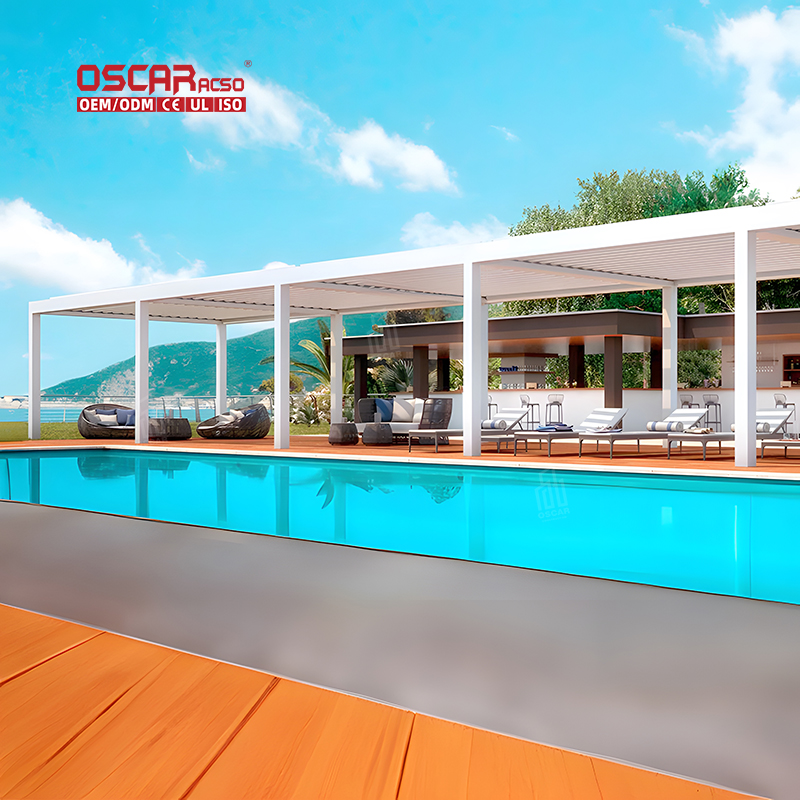Pergola Legs Unlocked, Mastering Adjustability for Ultimate Outdoor Stability
So, are pergola legs adjustable? 🤔 The answer is a resounding yes, many are! While not all pergolas come with this f...
.jpg)
So, are pergola legs adjustable? 🤔 The answer is a resounding yes, many are! While not all pergolas come with this feature, a significant number of modern designs incorporate adjustable legs or base systems to tackle common installation challenges like uneven ground, ensure perfect leveling, and provide long-term stability.
The dream of a perfectly level and stable pergola in any backyard is now a reality thanks to innovative design. Adjustable legs transform the installation process from a frustrating chore into a manageable project, empowering homeowners to achieve professional results.
🛠️ Why Adjustable Legs Are a Game-Changer
The primary advantage of adjustable pergola legs is their ability to compensate for uneven terrain. Not every patio or lawn is perfectly flat, and these systems eliminate the need for extensive ground leveling or complex shimming. They allow for micro-adjustments on-the-fly, ensuring the entire structure is perfectly level before final securing, which is crucial for the integrity of the roof and the operation of louvered systems.
Beyond the initial installation, this adjustability offers peace of mind. As the ground naturally settles and shifts over time with seasonal changes, you can make minor corrections to keep the structure stable and prevent doors or louvers from misaligning.
🔧 Types of Adjustability Systems
Not all adjustment mechanisms are created equal. Different products offer various methods to achieve the perfect height and level.
• Threaded Adjusting Mechanisms: Some heavy-duty steel bases feature a threaded screw system within the base plate. This allows you to rotate the foot to raise or lower it precisely, much like a leveling foot on a washing machine. This offers very fine control for achieving perfect leveling on sloped surfaces.
• Adjustable Base Plates: A very common solution involves a two-part base system. The base plate is anchored to a concrete foundation, and the pergola post is then connected via a height-adjustable saddle or bracket. This allows for some vertical adjustment to account for slight discrepancies in the concrete pour or post length.
• Modular and Stackable Weights: For freestanding pergolas and gazebos, some systems use stackable weighted bases. While not infinitely adjustable, adding or removing these heavy plates (often fillable with sand or water) allows you to fine-tune the height and, more importantly, the overall stability and wind resistance of the structure.

📐 Installation Tips for Perfect Leveling
Having adjustable legs is one thing; using them correctly is another. Proper installation is key to ensuring your pergola is safe, stable, and lasts for years.
- 1.
Start with a Solid Foundation: Always begin by ensuring your foundation (concrete footers, patio pavers, etc.) is as level as possible. Adjustable legs are for fine-tuning, not compensating for major slopes. A well-prepared base makes the entire process smoother.
- 2.
Adjust Before Fully Tightening: During assembly, keep all bolts and connectors slightly loose until all posts are in place and you’ve used the adjustment mechanisms to achieve perfect level. Once level, you can securely tighten all fasteners to lock the structure in place.
.jpg)
- 3.
Check and Recheck: Use a long spirit level across multiple beams, not just on individual posts. This ensures the entire frame is square and level from every angle. Small errors at the post level can magnify across the top of the structure.
- 4.
Consider Professional Help for Large Structures: While many adjustable leg systems are DIY-friendly, larger or more complex pergolas (especially those with motorized roofs) might benefit from professional installation to ensure everything is perfectly aligned and secure.
⭐ Choosing the Right Pergola for Your Terrain
With various options available, selecting the right system depends on your specific needs and garden’s layout.
• Slight Slopes and Patios: A pergola with threaded adjustable feet or an adjustable base plate system is often sufficient to compensate for minor imperfections in a patio or deck.

• Significant Slopes or Lawn Installation: For more pronounced slopes, you might need to combine custom-cut posts with adjustable base plates to achieve the desired height and level. In some cases, tiered foundations might be a better solution.
• Freestanding without Permanent Footings: If you’re using a freestanding pergola on a lawn or gravel area, look for models with weighted, fillable, or stackable base systems. These provide both adjustability and the necessary ballast to resist wind.
• Fixed vs. Retractable Roofs: Louvered or retractable roof pergolas have a much lower tolerance for being out of level, as it can affect drainage and mechanical operation. Investing in a model with excellent adjustability is crucial for these designs.
.jpg)
Investing in a pergola with adjustable legs is a smart decision for long-term satisfaction. It’s a feature that provides flexibility during installation and offers peace of mind for the future, knowing your outdoor investment can adapt to its environment and remain stable, level, and beautiful for years to come. The initial cost is often offset by the saved time, frustration, and potential cost of corrective measures needed for a non-adjustable structure.

